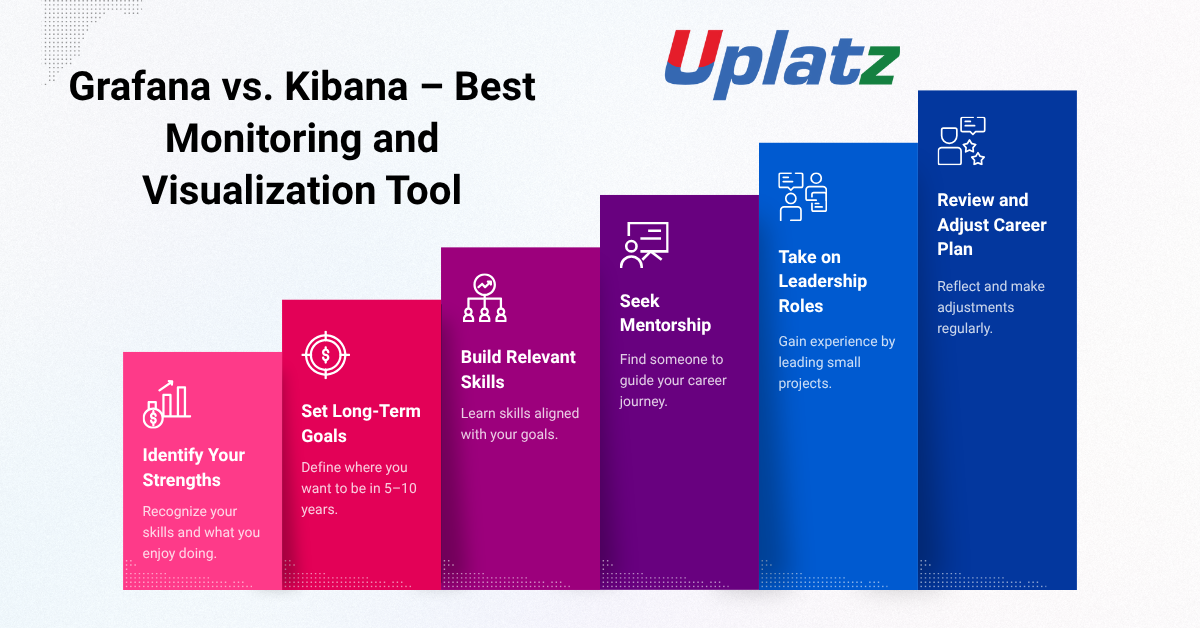Grafana vs. Kibana – Best Monitoring and Visualization Tool
Choosing the right observability and visualization platform depends on factors such as supported data sources, alerting capabilities, query flexibility, and integration needs. Below is a detailed comparison of Grafana and Kibana across key dimensions to help you decide which tool best fits your requirements.

- Data Source Support
Grafana excels at multi-source connectivity, allowing dashboards to combine metrics, logs, traces, and more from different backends:
- Supports Prometheus, Graphite, InfluxDB, Elasticsearch, Loki, CloudWatch, Azure Monitor, Google Cloud Monitoring, and custom data sources via plugins.
- Plugin ecosystem enables community and enterprise plugins for proprietary tools, enabling extensibility without data migration.
Kibana is tightly integrated with Elasticsearch, making it the premier choice if your stack is Elastic-based:
- Native support for Elasticsearch indices, including time-series (metrics), logs, and APM data.
- Extensions via Logstash and Beats for data ingestion, but limited direct support for non-Elastic sources without additional connectors.
- Visualization and Dashboarding
Grafana provides a highly flexible panel-based dashboard editor:
- Over 30 panel types (graphs, heatmaps, histograms, gauges, tables) with custom thresholds and annotations.
- Dashboard templating with variables for dynamic filtering and drill-downs.
- Panel and dashboard provisioning via code or API enables GitOps workflows.
Kibana offers rich interactive visualizations within the Elastic Stack:
- Wide range of charts (bar, line, pie, heatmap, coordinate maps) and Layered Maps for geospatial data.
- Lens editor for drag-and-drop visualization authoring and Canvas for infographic-style reports.
- Dashboard drill-downs and embedded Markdown panels for narrative reporting.
- Query Languages
Grafana relies on each data source’s native query language:
- PromQL for Prometheus, Flux or InfluxQL for InfluxDB, Loki’s LogQL, Elasticsearch Query DSL for Elasticsearch, and SQL for supported source.
- Explore mode for ad-hoc query experimentation and instant panel previews.
Kibana uses Elasticsearch’s Query DSL and the KQL (Kibana Query Language):
- KQL for free-text, field-based filtering and Lucene syntax for advanced full-text searches.
- Aggregations framework supports complex bucketing, metrics, and pipeline aggregations directly in dashboards
- Alerting and Notification
Grafana’s unified alerting supports multi-source thresholds and complex conditions:
- Define alerts in dashboards or via a dedicated alerting UI; supports grouping, silencing, and annotation
- Integrations with email, Slack, PagerDuty, Opsgenie, and custom webhooks for notifications
- Alert evaluation and notification independent of dashboard panels, enabling separation of concerns
Kibana provides Elastic Alerting integrated across observability apps:
- Rule types include metric threshold, machine-learning anomaly, log threshold, uptime, and geo-boundary alerts.
- Central Alerts and Actions UI for managing, muting, and viewing execution history.
- Out-of-the-box connectors for email, Slack, Jira, ServiceNow, and webhooks, with RBAC to control who can create and execute rules.
- Scalability and Performance
Grafana scales horizontally by deploying multiple stateless instances behind a load balancer:
- Backend is a Go server; frontend uses React/TypeScript, allowing lightweight and responsive UI.
- Caching query results and panel transformation reduces load on data sources.
- Enterprise deployments use Grafana Enterprise metrics backends (Mimir, Prometheus Cloud) for high-cardinality and long-term retention.
Kibana’s scaling relies on multiple Kibana server instances and Elasticsearch cluster performance:
- Task Manager distributes background jobs (alerting, reporting) across instances for reliability and throughput.
- Load balancing of HTTP traffic to Kibana servers and configuration of unique identifiers per instance ensures HA.
- Elasticsearch handles data storage, so performance tuning focuses on threadpools, index sharding, and resource allocation.
- Use Cases and Adoption
Grafana is ideal for heterogeneous environments and full-stack observability:
- Infrastructure monitoring (Prometheus + Node Exporter), application performance dashboards (Jaeger, Tempo), and log exploration (Loki) in one pane.
- Mixed-source correlational dashboards—e.g., combining cloud metrics, on-prem logs, and database metrics for root-cause analysis.
- Widely adopted beyond DevOps: IoT analytics, business intelligence, and even personal projects like health monitoring dashboards.
Kibana shines in Elastic Stack–centric scenarios:
- Log analytics and SIEM use cases, leveraging Elasticsearch’s indexing and search capabilities for security and compliance dashboards.
- APM with Elastic APM server, correlating metrics, traces, and logs for full-lifecycle application monitoring.
- Real-time analytic dashboards, anomaly detection, and geo-visualization workflows built into the Elastic ecosystem.
- Extensibility and Ecosystem
Grafana’s plugin architecture opens vast customization:
- Data source plugins connect to new endpoints; panel plugins add novel visualizations; app plugins bundle dashboards and configuration for turnkey solutions.
- Community Marketplace offers hundreds of plugins; Grafana Enterprise includes premium integrations (Splunk, New Relic, Datadog) as add-ons.
Kibana’s plugin system focuses on Elastic ecosystem enhancements:
- Server-side and UI plugins extend discover, visualizations, and security features.
- Elastic Machine Learning integration for automated anomaly detection in time-series data.
- Kibana Canvas for custom reporting and Alerting through the management UI.
Conclusion
Choose Grafana if your organization needs:
- Multi-data-source dashboards and unified alerting across heterogeneous systems.
- Highly customizable visualizations, plugin extensibility, and GitOps provisioning.
- Static, code-defined dashboards combined with ad-hoc exploration.
Choose Kibana if your environment is centered on Elasticsearch:
- Deep integration with Elastic Stack data ingestion, analytics, anomaly detection, and SIEM.
- Rich in-app visualization editors (Lens, Canvas) and machine-learning alerts.
- Centralized management of rules, cases, and security controls within Elastic Stack.
Both platforms are mature, open source, and enterprise-ready. The optimal choice aligns with existing technology investments, required integrations, and the scope of observability use cases.
